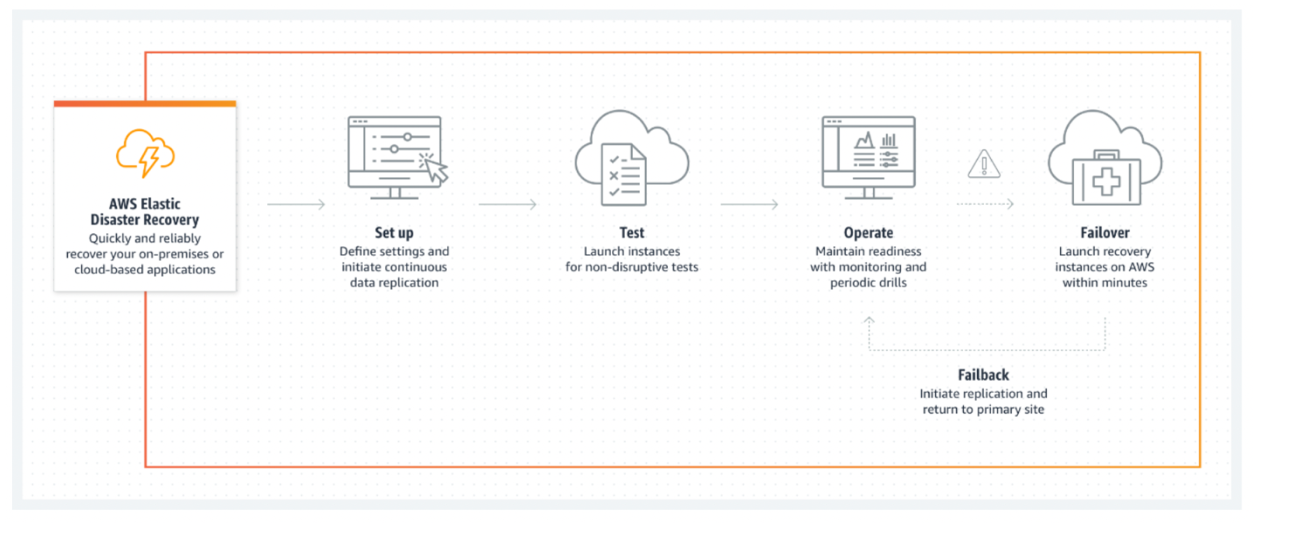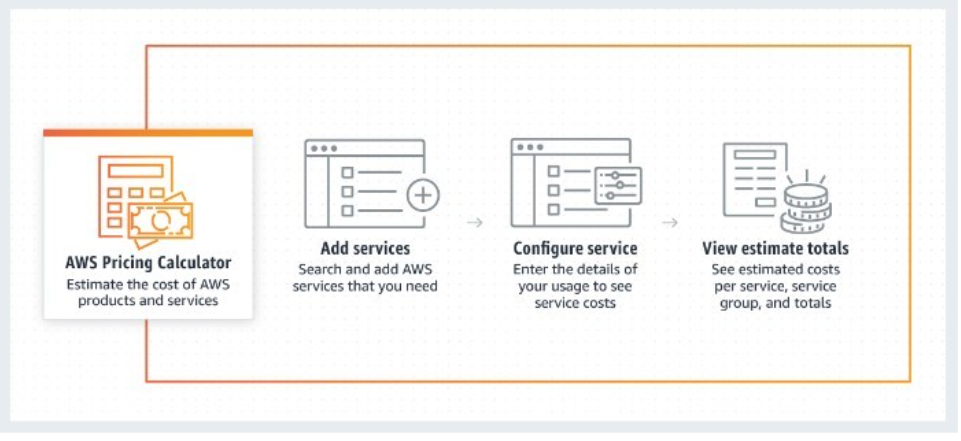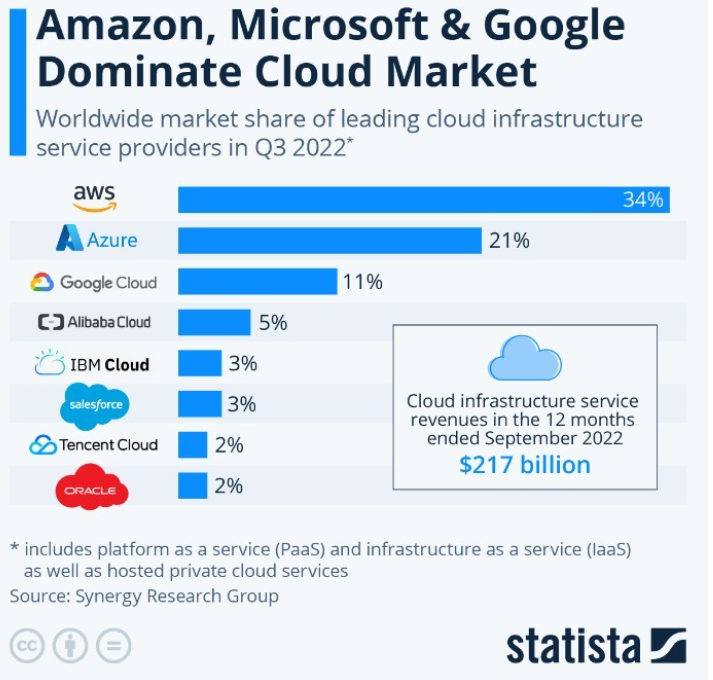A Guide to Amazon Web Services

Amazon Web Services, or AWS, is a cloud computing platform developed by Amazon and launched in July 2002. It allows organisations to build, deploy, and scale web applications and services quickly and cost-effectively. AWS comprises a comprehensive suite of over 200 services such as compute, storage, networking, and databases, mobile, analytics, and artificial intelligence (AI) solutions. Its wide range of cloud solutions enables organisations to increase agility, reduce costs, eliminate IT infrastructure complexities, and many other benefits. AWS ensures secure access to your data from anywhere worldwide, providing reliable platforms for global businesses. Its resources enable enterprises to offer secure, flexible, and cost-efficient digital solutions, empowering them to innovate faster.
AWS History
Below is a summary of a brief history of Amazon Web Services:
- AWS was launched in 2002 as a developer tool that provided access to the Amazon product catalogue through SOAP and XML interfaces.
- In 2006, AWS expanded its portfolio with its Elastic Compute Cloud (EC2) and Simple Storage Service (S3), which allowed customers to rent virtual servers and store data on the cloud.
- Since then, AWS has grown rapidly and added more services, such as databases, analytics, networking, mobile, developer tools, management tools, IoT, security, and enterprise applications.
- As of 2023, AWS has 31 geographical regions, 99 availability zones and serves millions of customers worldwide, including startups, enterprises, and government agencies.
- AWS is the market leader in cloud computing and generates billions of dollars in revenue for Amazon annually.
(Image source: statista.com)
How Does AWS Work?
AWS provides customers with a wide range of services to help them build, run, and expand their applications in the cloud. Amazon takes care of the infrastructure, such as servers, storage, and databases, while customers get to choose their operating system, programming language, and web platform that best suits their needs.
(Video source: youtube.com)
The company also offers services for emerging technologies like machine learning, analytics, data lakes, and the Internet of Things (IoT).
AWS utilises a pay-per-use model that offers flexibility in scaling up or down based on customer needs. There is a free tier for most services which allows organisations to test their usage requirements. In addition, Amazon offers a pricing calculator to help customers calculate their estimated costs.
In addition, several third-party vendors also make software directly available through Amazon Web Services.
AWS Marketplace
The AWS Marketplace enables customers to easily find and deploy AWS-tested and approved software from trusted third-party vendors. These providers have been certified by AWS to provide products optimised for AWS Cloud, meaning they usually offer superior integration capabilities compared to non-certified products.
(Video source: youtube.com)
AWS Partner Network
AWS has a comprehensive partner network that can help customers market, build, and launch their products on Amazon Web Services. With AWS at the helm of third-party vendor software, customers are guaranteed secure and reliable access to the best services available in the cloud computing industry.
(Video source: youtube.com)
AWS Support
AWS Support is a collection of services and tools that help customers with AWS products and services. AWS Support offers four different pricing tiers:
- Basic: Free and provides access to online documentation, forums, and a service health dashboard.
- Developer: Costs $29 per month or 3% of monthly AWS usage, whichever is greater, and provides access to technical support via email during business hours, as well as general guidance and best practices.
- Business: Costs $100 per month or 3% to 10% (actual percentage depends on usage with a higher volume attracting a lower cost) of monthly AWS usage, whichever is greater, and provides access to technical support via phone, chat, or email 24/7, as well as architectural guidance, case management, and third-party software support.
- Enterprise On-Ramp: This support plan costs $5,500 monthly or 10% of the monthly AWS charges, whichever is greater.
- Enterprise: Costs $15,000 per month or 3% to 10% of monthly AWS usage, whichever is greater, and provides access to technical support via phone, chat, or email 24/7, a dedicated technical account manager, and infrastructure event management.
What Is Amazon Web Services Used For?
AWS has a wide range of use cases across different industries and domains. Some of the everyday use cases of AWS are:
- Hosting websites and web applications on a scalable and reliable cloud platform.
- Deploying and managing relational and non-relational databases with high availability, performance, and security.
- Processing and analysing large volumes of data with various tools and frameworks.
- Building and running serverless applications that respond to events and triggers.
- Developing and testing software with continuous integration and delivery.
- Migrating and modernising existing applications to the cloud.
- Enhancing security and compliance with encryption, identity management, and auditing.
- Leveraging artificial intelligence and machine learning for various tasks and insights.
- Creating and delivering engaging and immersive media content.
- Innovating and experimenting with new ideas and solutions.
- Backup, long-term data retention, and disaster recovery.
AWS Products and Services
AWS has over 200 products and services covering various domains and needs. Here, we provide a list of some of the major categories and examples of AWS products and services.
- Compute: Compute services allow users to deploy and manage virtual machines, containers, serverless functions, and various other computing resources. Some of the services in this category include Amazon EC2, AWS Lambda, Amazon Lightsail, Amazon ECS, Amazon EKS, AWS Batch, AWS Fargate, AWS Outposts, AWS Wavelength, AWS Local Zones, and Amazon EC2 Image Builder.
- Storage: These services enable users to store, retrieve, and manage data across various applications. Some of the services in this category include Amazon S3, Amazon EBS, Amazon EFS, Amazon S3 Glacier, AWS Storage Gateway, AWS Backup, AWS Snow Family, AWS Transfer Family, and Amazon FSx.
- Database: With these services, users can deploy and manage databases for various use cases. Examples in this category include Amazon DynamoDB, Amazon Aurora, Amazon ElastiCache, Amazon Redshift, Amazon Neptune, Amazon DocumentDB, Amazon QLDB, Amazon Timestream, and Amazon Keyspaces.
- Networking and Content Delivery: These help users to securely connect and manage resources across the internet and within Amazon's cloud infrastructure. Some of the services in this category include Amazon VPC, Amazon CloudFront, Amazon Route 53, AWS Transit Gateway, AWS Direct Connect, AWS VPN, AWS Global Accelerator, AWS App Mesh, AWS Cloud Map, and AWS Local Zones.
- Analytics: These services enable users to analyse and gain insights from data. Some of the services in this category include Amazon EMR, Amazon Athena, Amazon Kinesis, Amazon Redshift, Amazon Elasticsearch Service, Amazon QuickSight, AWS Glue, AWS Lake Formation, AWS Data Pipeline, AWS Data Exchange, Amazon MSK, Amazon Managed Grafana, and Amazon Managed Prometheus.
- Machine Learning: These allow users to build and deploy machine learning models. Services here include Amazon SageMaker, Amazon Comprehend, Amazon Lex, Amazon Polly, Amazon Rekognition, Amazon Textract, Amazon Transcribe, and Amazon Translate.
- Security, Identity, and Compliance: These services enable users to secure and make Amazon Web Services compliant with industry standards. Some examples include AWS Identity and Access Management, Amazon Cognito, AWS Single Sign-On, AWS Directory Service, AWS Secrets Manager, AWS Certificate Manager, and AWS WAF.
- Application Integration: These services allow users to integrate Amazon Web Services with other applications and services for various use cases. Some examples include Amazon SNS, Amazon SQS, Amazon MQ, AWS Step Functions, Amazon EventBridge, AWS AppSync, and Amazon Simple Workflow Service.
- Management and Governance: These services help users to manage AWS resources and applications. Examples include AWS CloudFormation, AWS CloudTrail, AWS Config, AWS OpsWorks, AWS Service Catalog, AWS Systems Manager, and AWS Trusted Advisor.
- Front-end Web and Mobile: These allow users to build and deploy web and mobile applications. They include AWS Amplify, Amazon API Gateway, AWS AppSync, Amazon Cognito, AWS Device Farm, Amazon Pinpoint, and Amazon SNS.
- Developer Tools: These services enable users to develop and deploy Amazon Web Services applications. Examples include AWS Cloud9, AWS CodeCommit, AWS CodeBuild, AWS CodeDeploy, AWS CodePipeline, AWS CodeStar, AWS X-Ray, and AWS Command Line Interface.
- Internet of Things: These enable users to build and deploy applications for the IoT. They include AWS IoT Core, AWS IoT Device Management, AWS IoT Device Defender, AWS IoT Device Tester, AWS IoT Greengrass, AWS IoT Analytics, and AWS IoT Events.
- Cloud Financial Management: These services help users manage Amazon Web Services spending and cost optimisation. Examples include Amazon Cost Explorer, AWS Budgets, Amazon EC2 Spot Instances, and Reserved Instance (RI) Reporting.
- Media Services: Users can build and deploy media applications with these services. They include Amazon Elastic Transcoder, Amazon Kinesis Video Streams, Amazon K Amazon Elastic Transcoder, Amazon Kinesis Video Streams, and Amazon Interactive Video Service.
- Customer Engagement: These services allow users to create customer engagement solutions. They include Amazon Connect, Amazon Pinpoint, Amazon SES, Amazon SNS, Amazon Chime, Amazon Chime SDK, and Amazon WorkMail.
- Business Applications: Amazon Web Services also offers a range of business applications. Examples include Amazon WorkDocs, Alexa for Business, AWS Supply Chain, and Amazon Connect.
AWS for Disaster Recovery and Backup
Amazon Web Services provides a range of services and solutions for disaster recovery and backup. AWS Elastic Disaster Recovery is designed to minimise downtime and data loss with fast, reliable recovery of on-premises and cloud-based applications. It continuously replicates server-hosted applications and databases from any source into AWS using block-level replication.
 (Image source: aws.amazon.com)
(Image source: aws.amazon.com)
AWS also offers resources and services to manage account access, detect irregular activity, isolate DDoS attacks, encrypt data in transit and at rest, and perform audits. These features help organisations build a disaster recovery strategy that meets their specific requirements.
Organisations can use AWS Marketplace to find disaster recovery software to build and deploy a specific disaster recovery plan to support a seamless end-user experience.
AWS Disaster Recovery strategies offer four different approaches ranging from affordable backups to more complex strategies such as using multiple active Regions. With the active/passive approach, an active site (like an AWS Region) is used to host the workload and serve traffic, while a passive site (such as a different AWS Region) is used as backup and can be deployed in case of failover events. To ensure your Disaster Recovery plan is well-equipped for any possible disaster, it’s important to assess and test these strategies regularly.
(Image source: aws.amazon.com)
AWS for Disaster Recovery and Backup
Amazon Web Services provides a range of services and solutions for disaster recovery and backup. AWS Elastic Disaster Recovery is designed to minimise downtime and data loss with fast, reliable recovery of on-premises and cloud-based applications. It continuously replicates server-hosted applications and databases from any source into AWS using block-level replication.
 (Image source: calculator.aws)
(Image source: calculator.aws)
Outage History
AWS has a history of outages dating back to July 20, 2008. Some of the significant outages include:
- July 20, 2008: Global Amazon S3 Availability Event (Global).
- APRIL 29, 2011: Amazon EC2 and Amazon RDS Service Disruption in the US East Region (US-East-1).
- July 2, 2012: AWS Service Event in the US East Region.
- June 13, 2014: Amazon Simple DB Service Disruption.
- September 20, 2015: Amazon DynamoDB Service Disruptions in the US-East Region.
- February 28, 2017: Amazon S3 Service Disruption in Northern Virginia (US-East-1) Region.
- August 23, 2019: Amazon EC2 and Amazon EBS Service Event in the Tokyo (AP-NORTHEAST-1) Region.
- December 10th, 2021: AWS Service Event in Northern Virginia (US-East-1) Region.
AWS Competitors
A few of Amazon Web Services’ competitors include:
Sign Up Now!
For expert advice and resources – blogs, interviews, webinars, guides and more.



